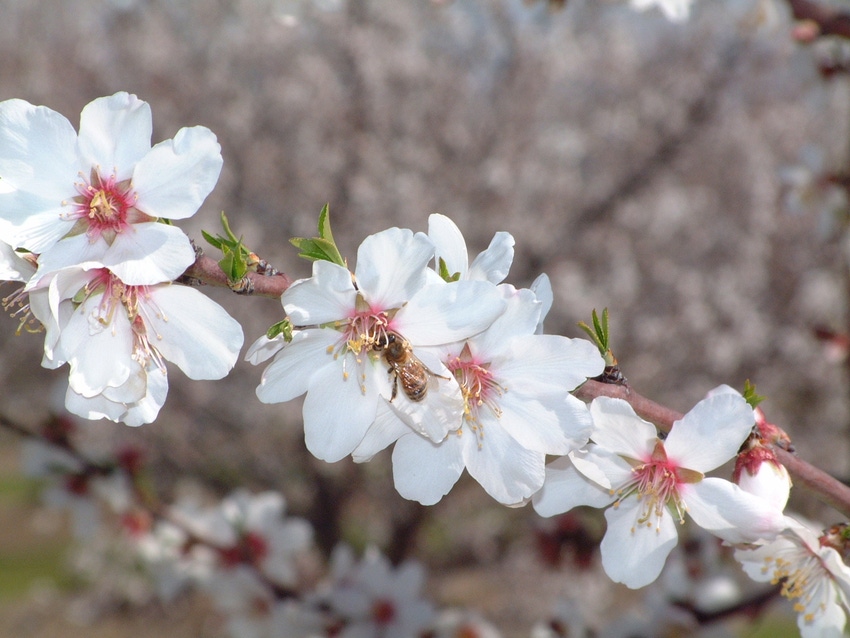August 7, 2017

Thinking of bees reminds us of honey, but the agricultural richness of California allows bees to produce a richer income for their keepers through pollination. Honey serves as a by-product.
The burgeoning acreage of almond trees in the state creates a growing demand for bees that pollinate the crop early in the year. Honey sales are incidental as almond growers pay bee keepers to locate their bee boxes in and around orchards.
Almond pollination
Depending on weather, the bees remain in the orchards for six weeks or more. Whatever the duration, they must be there for the full extent of the trees’ bloom. In many orchards the variety of the trees alternate by rows. Bees fly naturally from one row to another, gathering pollen from the ‘pollinator’ rows, depositing to open blossoms in the adjacent producer rows.
An economical examination of this process was reported in the May-June issue of ARE Update, the newsletter of the University of California’s Giannini Foundation of Agricultural Economics. The bee report was written by research economist Hyunok Lee, visiting lecturer Antoine Champetier, Agricultural Issues Center Director Daniel Sumner, and Agriculture and Resource Economics Professor Frank Buck.
Bee numbers on the increase
The authors offer their conclusions that bee populations are increasing as almond acreage also increases. It has been popularly reported that bee numbers are moving downward, but the conclusion of the report is that only prices to beekeepers have dropped, responding to decreasing demand for their services.
At the same time they conclude that the well-being of the $300 million a year pollination services industry depends on the economic health of the almond industry. Almond industry promotional personnel are well aware of the tie-in.
Bees and cherries
Fourteen other California crops depend on pollination services to achieve maximum production. Among the most dependent are alfalfa, avocados, cherries, watermelons, plus onions for seed and squash. But only cherry growers pay for the services at a rate comparable to almond growers. Apple growers pay only a fraction.
For beekeepers the level of honey production is a major factor, and it varies markedly from one crop to another. Interestingly, honey production by bees working in plum trees is so vigorous that growers pay even more than almond growers to have hives placed in orchards. By contrast, prune growers pay the lowest rate for bee pollination.
Costs per hive
The payment to beekeepers ranges from$185 per hive paid by plum growers to only $18 per hive paid by prune growers. Those with almonds pay the second highest rate at $164 per hive. The rate multiplies by the enormous number of hives required by the almond industry which explains why the state of the almond industry is so critical to beekeepers.
For those interested in specific numbers, almond pollination requires about two bee hives per acre. Many hives are trucked in from other states, and moved by their owners to later-blooming crops or taken home when almond blooms begin turning to nuts.
Authors of the report acknowledge that bee hives are vulnerable once they are placed in the orchard or field including theft, disease, rainy days, or extremely cold weather which discourages bees from flying.
Bees – agriculture’s blessing
The interweaving of economic factors between growers of several crops and beekeepers who supply pollination services is just one of many interrelationships that occur in California’s dynamic agricultural industry.
In this case the diligent work of bees, their keepers, and those requiring their services have led to an important study. It might not make the honey any sweeter, nor the bee sting less painful, but it helps us understand how economics and nature can come together for everybody’s benefit – especially the bees and their keepers.
About the Author(s)
You May Also Like




